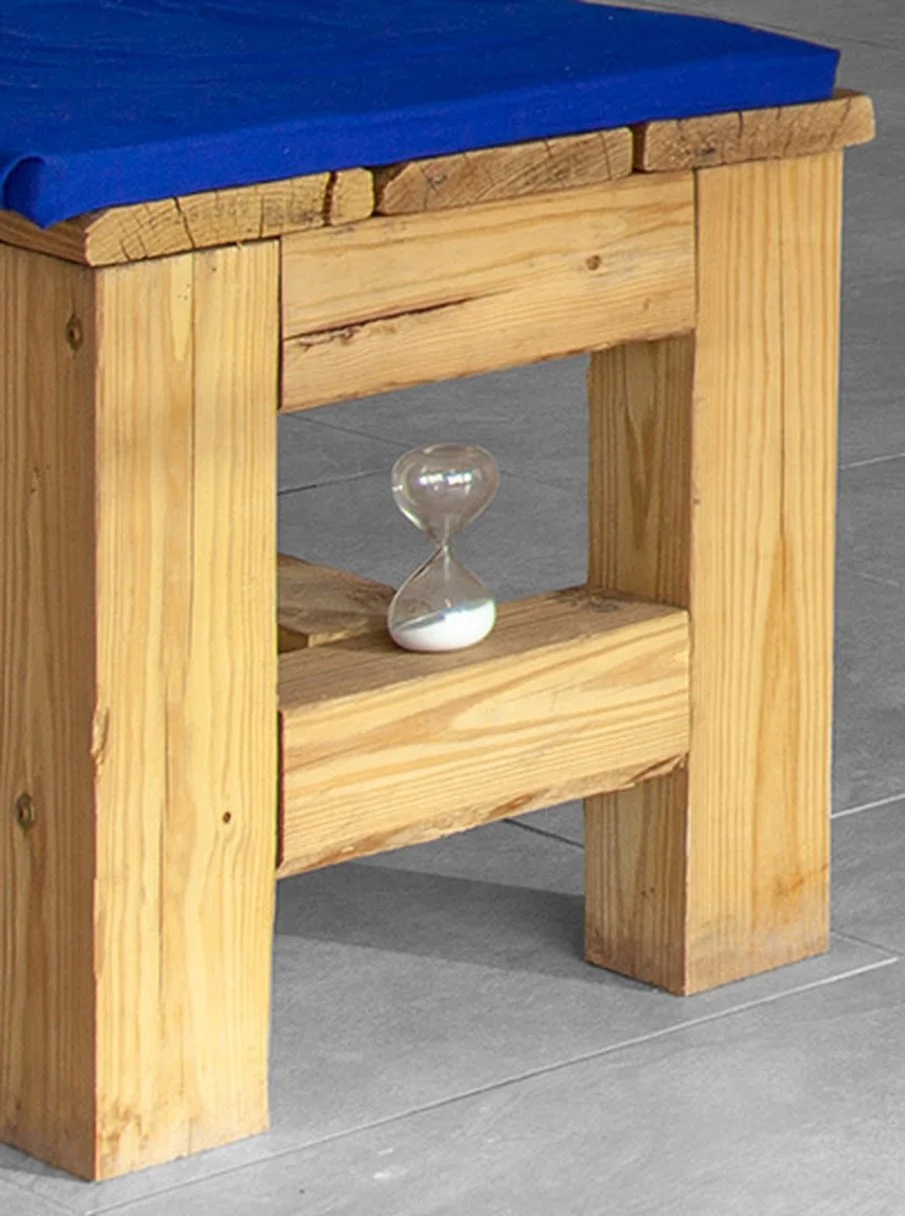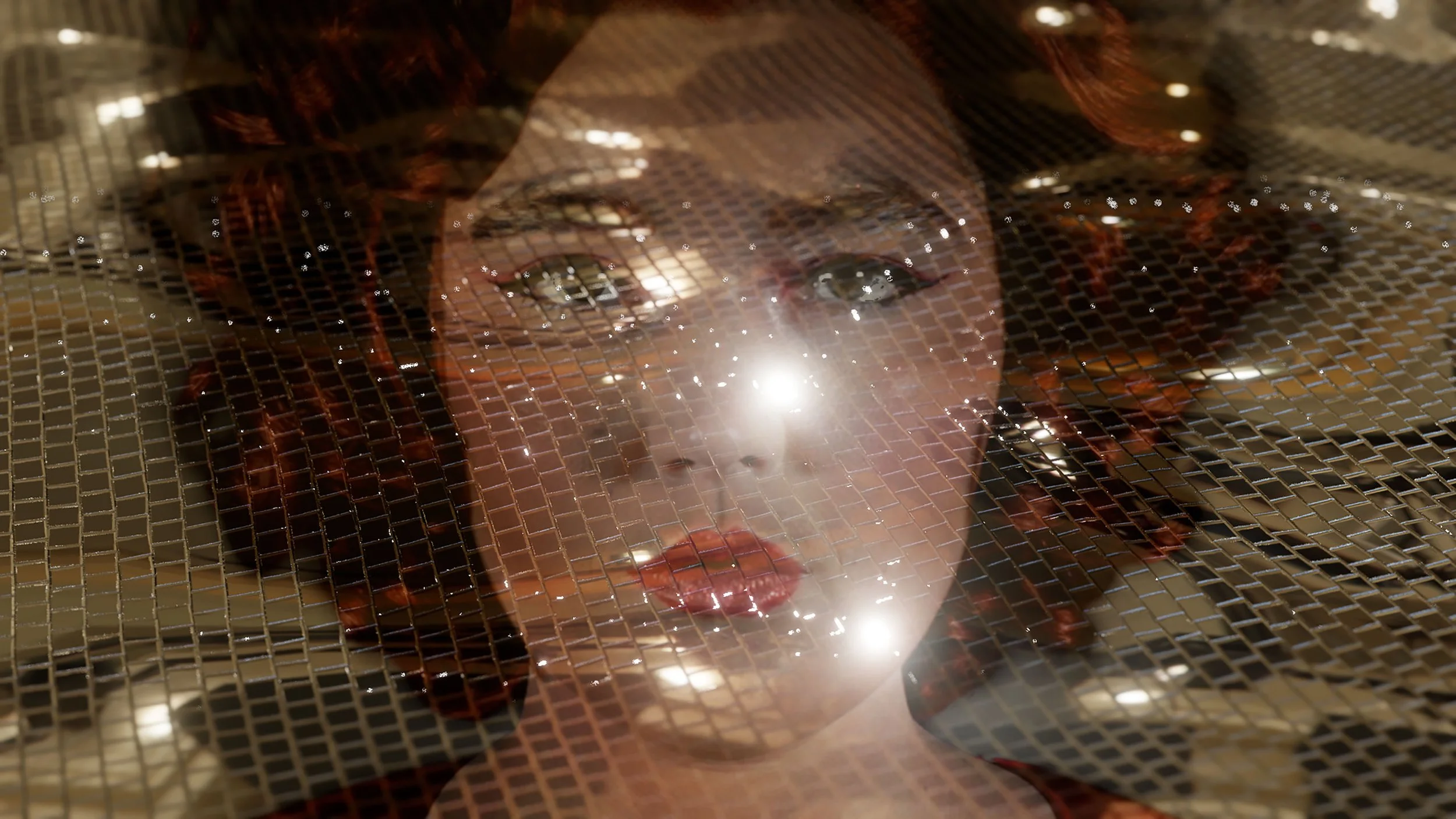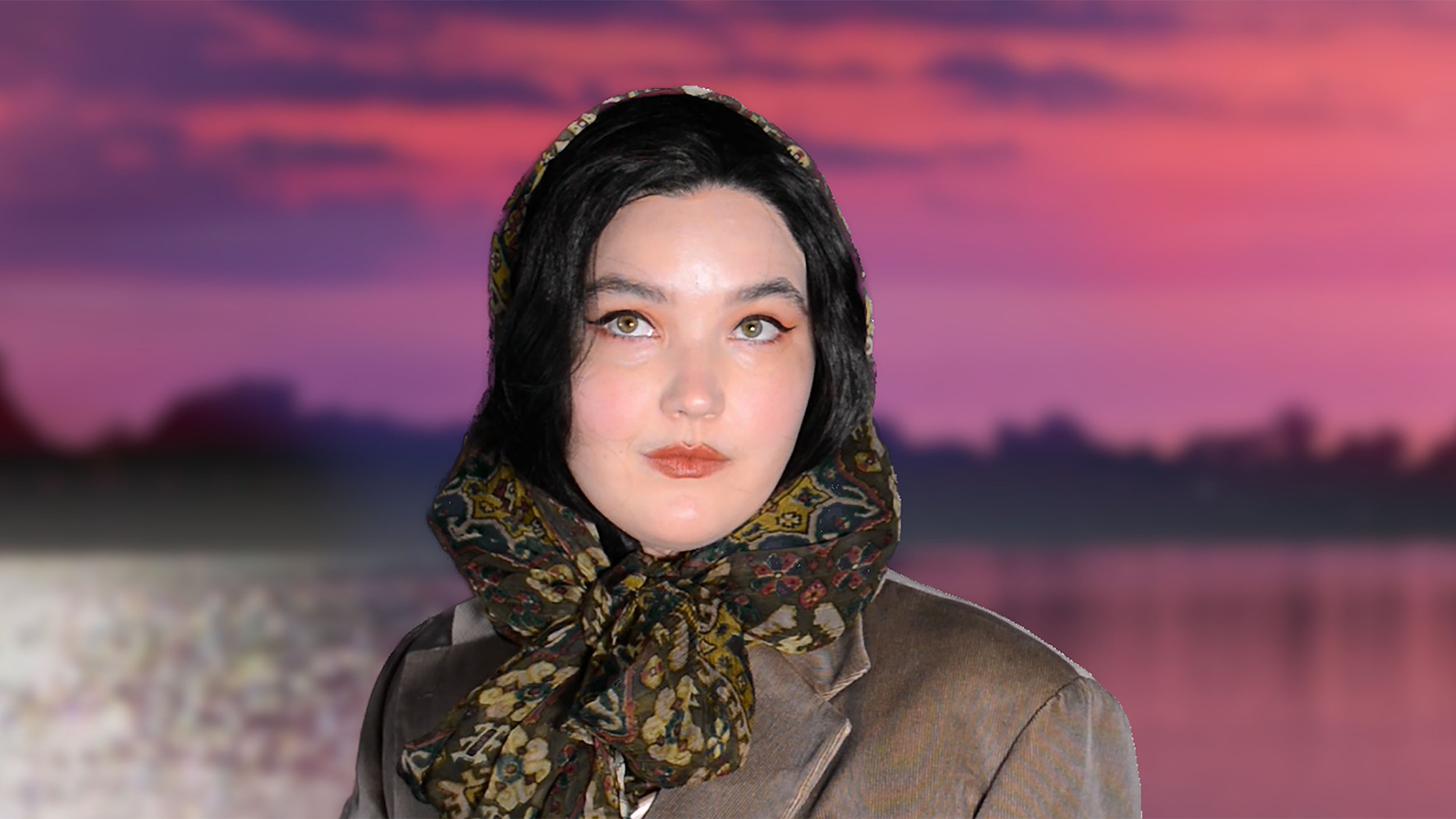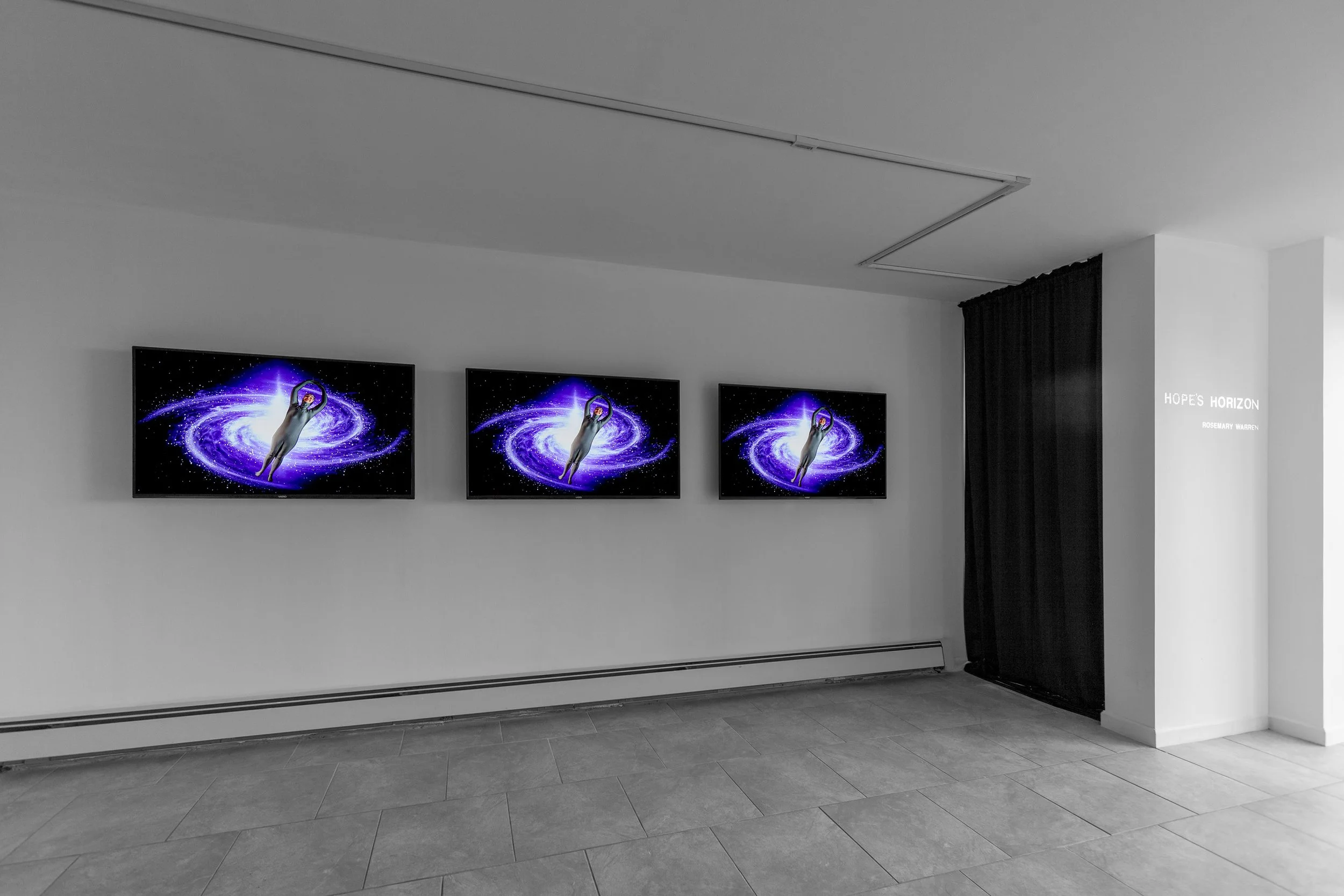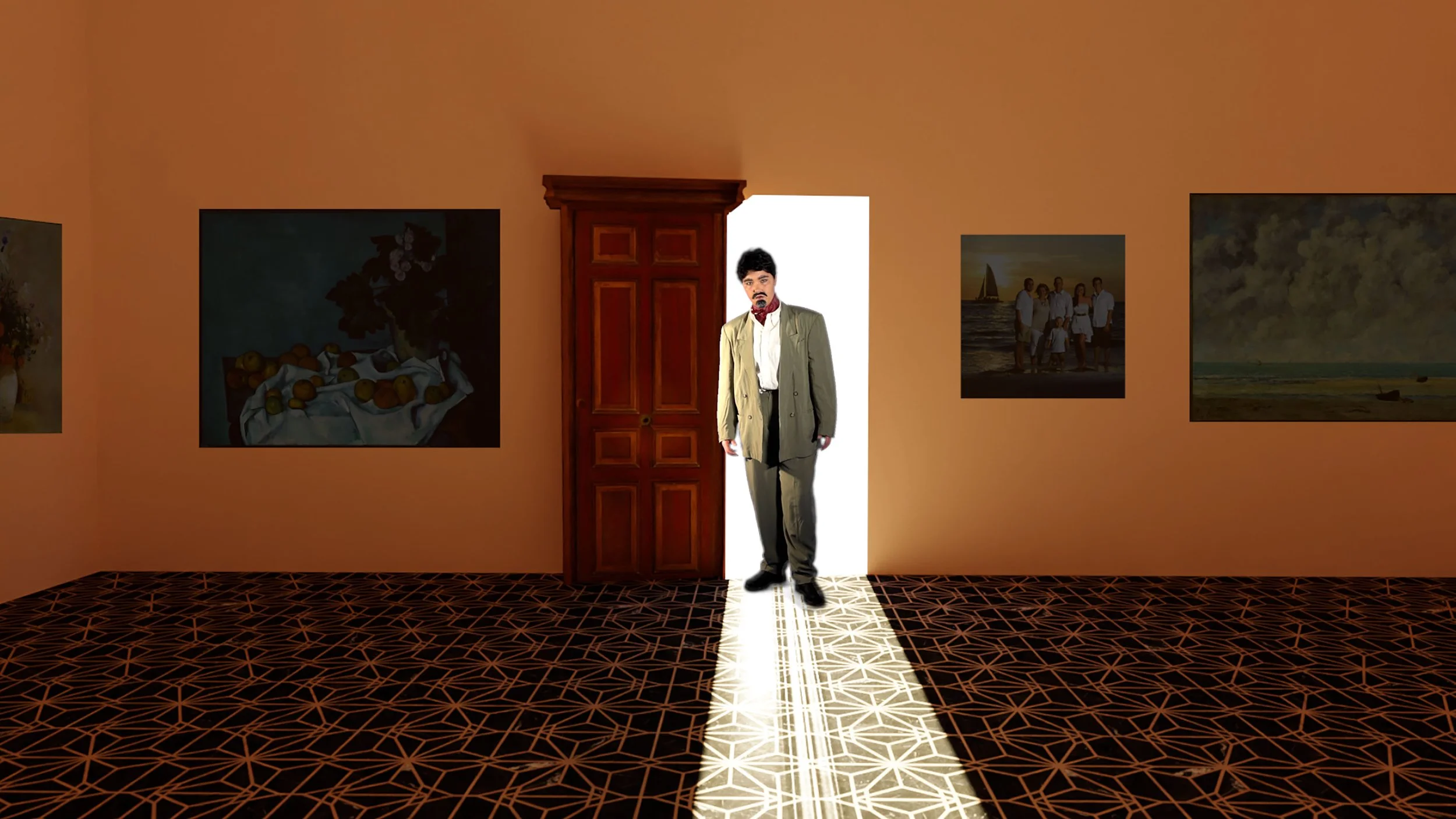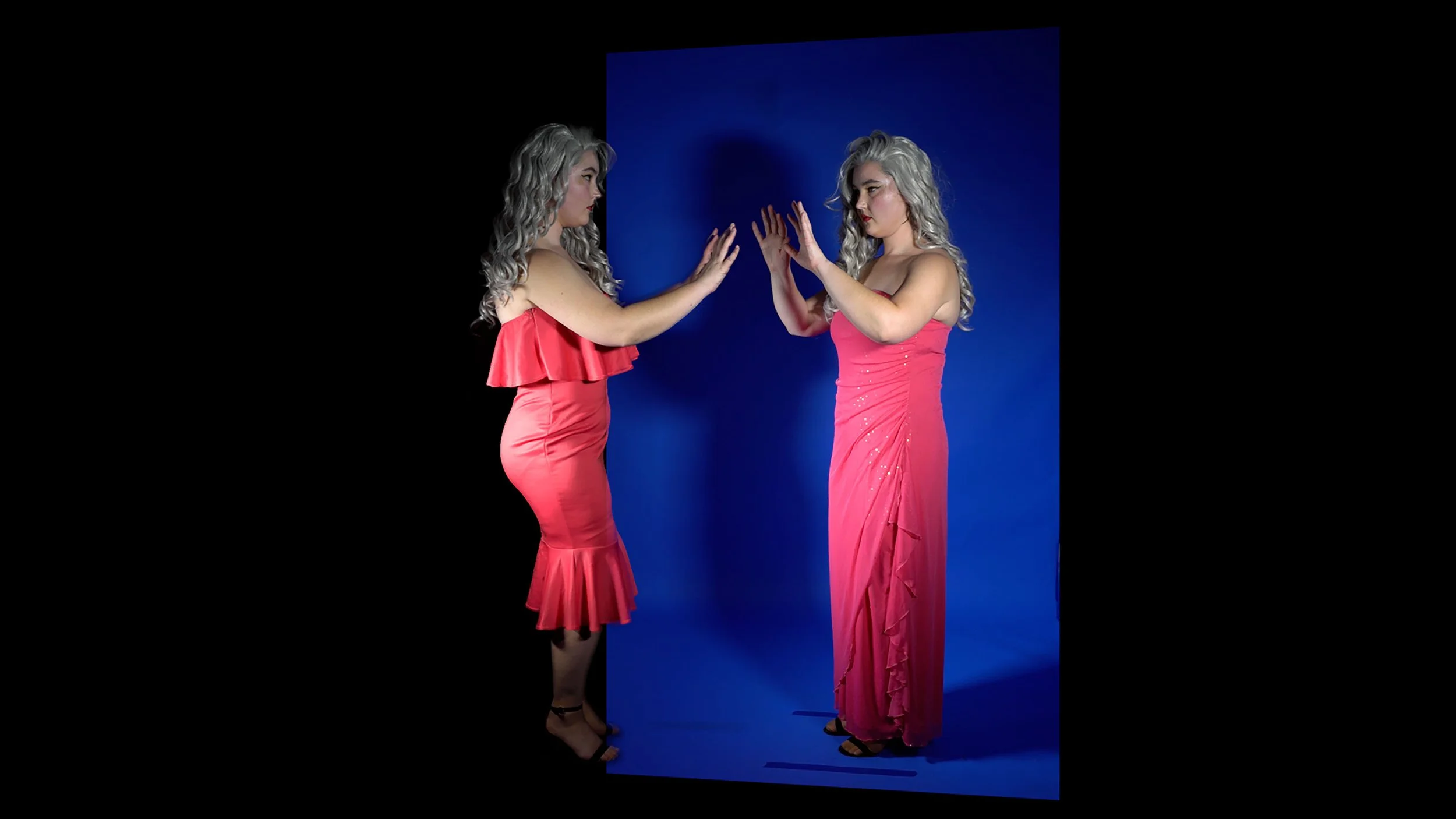Scenes From a Black Hole
Installation view of Hope’s Horizon by Rosemary Warren at Thomas VanDyke Gallery. Image courtesy of the gallery.
The first thing seen upon entering Rosemary Warren’s exhibition, Hope’s Horizon: three television screens mounted on the wall. A long bench sits in the middle of the space about nine feet away from the screens. An interesting feature of this bench: on its side brace sits a small hourglass, its presence immediately recalling the hourglass from the iconic soap opera Days of Our Lives, a hallmark of the genre. The hourglass is also a timeless symbol of containing and observing time within an enclosed vessel. For us, starting in the mid-20th century, that enclosed vessel is the hourglass of the TV screen.
Installation view of Hope’s Horizon by Rosemary Warren at Thomas VanDyke Gallery. Image courtesy of the gallery.
Rosemary Warren’s Hope’s Horizon is a self-reflexive soap opera parody similar to work by her contemporary, digital artist Kalup Linzy; both are indebted to the tradition of portraying various other characters as pioneered by Cindy Sherman. While Linzy uses the genre to critique the art world, Warren critiques the genre itself. She touches upon familiar narrative tropes such as the prodigal child and the rich girl and the townie. Warren’s work includes the commercials and promos of daytime television, creating her own television universe that folds in on itself.
Still from Hope’s Horizon by Rosemary Warren, three channel digital video, running time 13:13. Image courtesy of the gallery.
Warren shot the whole piece in the gallery using chroma-key technology. Whereas Linzy primarily places himself and his characters in real locations, Warren creates a virtual world within the imagination — on the cusp of infinity. We feel the tactility and physicality of the outer world that Linzy occupies, yet we express wonder at the heightened virtual reality of Warren’s infinite inner world.
Still from Hope’s Horizon by Rosemary Warren, three channel digital video, running time 13:13. Image courtesy of the gallery.
The mind, with its many levels of consciousness, could be considered a black hole. Indeed, the fictitious actress Cassandra Way of Hope's Horizon, who offers a disclaimer in a commercial, "I'm not an expert in black holes," alerts us to the metaphysical underpinnings of Warren’s piece. It's a warning of what's happening before our very eyes — and there's nothing that she, or we, can do to control or truly understand the continuous barrage of images: presented here in triplicate, no less! We become absorbed into the never-ending narratives within narratives not only of the TV soap opera itself, but the commercials that offer other ideas and other agendas. Realities overlap. The mind reels into darkness illuminated by the TV screen.
Installation view of Hope’s Horizon by Rosemary Warren at Thomas VanDyke Gallery. Image courtesy of the gallery.
And then there is the condition of the instant gratification generation: the short attention span. Although it can take years to watch soap-opera plots unveil, instant gratification is still present in this effortless escape into other people’s lives, other peoples’ consequences and other people’s hardships, triumphs and tragedies. The instant of the gratification is in the very act of watching “others” live out their risky, tumultuous lives while we remain inert, passively watching these events from the safety of our own lives.
Still from Hope’s Horizon by Rosemary Warren, three channel digital video, running time 13:13. Image courtesy of the gallery.
As we watch our favorite characters emote histrionically, our imaginations incorporate aspects of ourselves into the very shows we watch. Warren demonstrates this as she plays all the characters in the soap (most notably the stars — Cliff and Electra), including a character seemingly “outside” of the show: the lonely Mara who aggressively controls the remote from her couch. Cliff and Electra, the two main characters, embody Jung’s Animus and Anima archetypes, respectively: unconscious representations of the masculine and feminine that exist within everyone’s psyche. We are always conscious of Warren’s femininity, as the masculine voice of Cliff sounds the same as the feminine voice of Electra. Therein lies the ongoing internal psyche — perhaps that of Mara — struggling for balance.
Still from Hope’s Horizon by Rosemary Warren, three channel digital video, running time 13:13. Image courtesy of the gallery.
We even see another of Jung’s archetypes, the Persona, presented in the mirror image of two Maras: the one in “reality” on the couch and fantasy version in the soap opera. The other characters are a sorrowful extension of Mara, who appears to be experiencing a subtle nervous breakdown — perhaps a result of excessive television vegetating. There is a moment when the soap’s star, Cassandra Way — appearing in a diet shake infomercial — mentions the word “hope,” but she says it with a pause and the most understated, fleeting regret. Therein lies the sadness and tragedy; it is hope lost. And in that loss, the fragile distortion of the ego, deflated, is manifest in the imperfectly shaped moon that appears over the horizon. The self has been irreparably corrupted by the artificial sating of instant gratification.
Still from Hope’s Horizon by Rosemary Warren, three channel digital video, running time 13:13. Image courtesy of the gallery.
At the beginning of Hope’s Horizon, we see Warren set up her bluescreen studio, dressing up in various different characters, revealing her hand behind-the-scenes. But is she the real Rosemary Warren? Or is this another manifestation within the TV fantasy: the black hole, mise-en-abysme? Hope’s Horizon features works within works within works operating at multiple levels, timescales, and attention spans. Another soap within a soap within a soap — ad infinitum.
Stay tuned — same time same channel.


